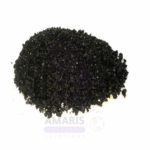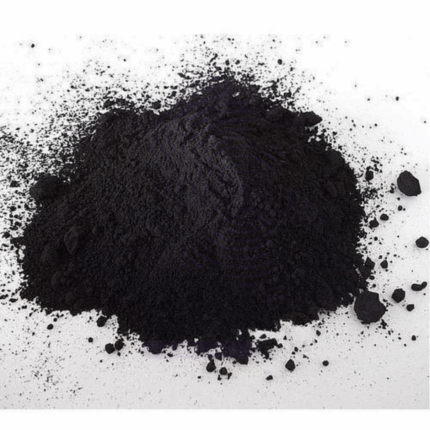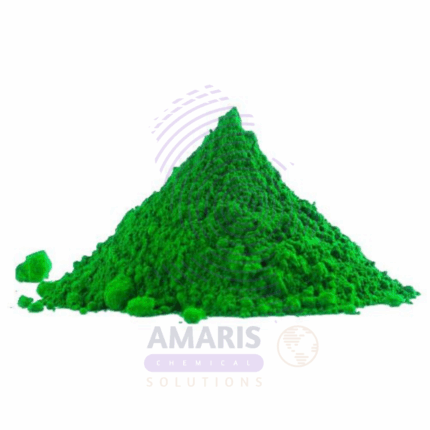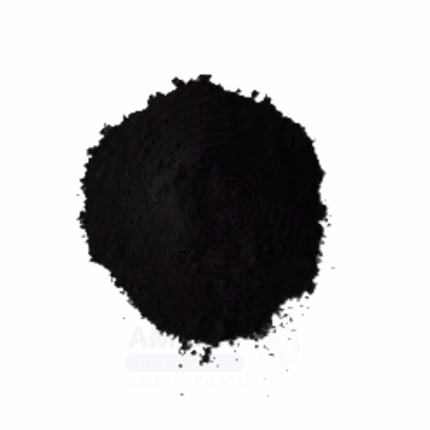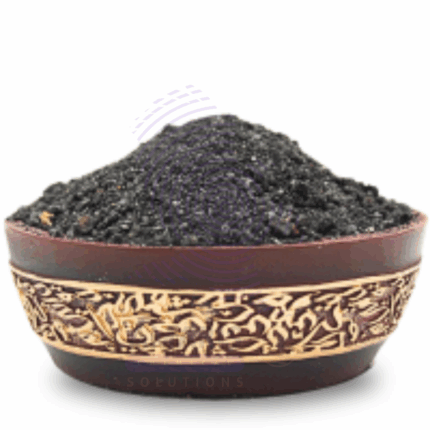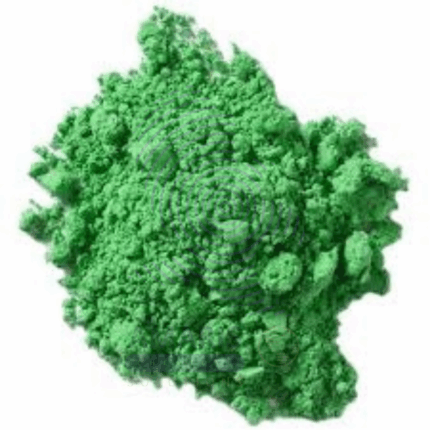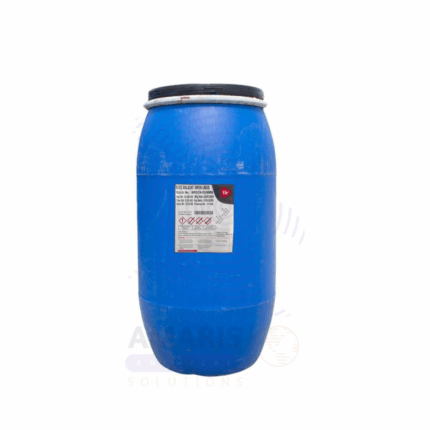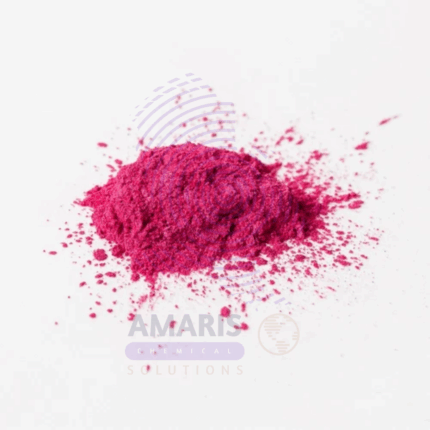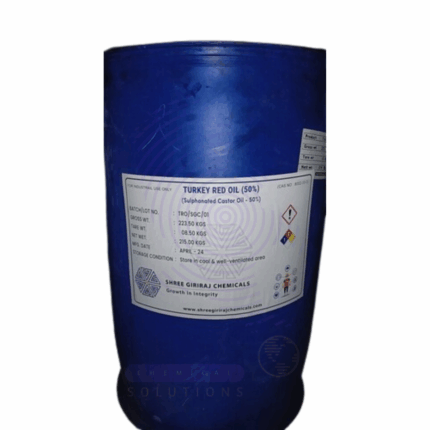Back to products
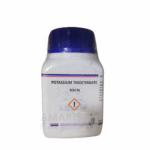

Potassium Thiocyanate Extra Pure
$ 18.00 Original price was: $ 18.00.$ 17.78Current price is: $ 17.78.
Black Color Water Soluble
Whatsapp Order
Black Color Water Soluble is a synthetic dye known for its excellent water solubility and intense black coloration. It is widely used in textile dyeing, leather processing, cosmetics, food and beverage coloring, pharmaceutical applications, paints, and laboratory uses. This dye offers good stability across various pH ranges and ensures consistent, uniform color in aqueous systems. Its versatility makes it essential in many industrial, scientific, and commercial applications.
Description
Table of Contents
Toggle
Black Color Water Soluble
Primary Uses
- Laboratory and Medical Applications
- Used as a staining agent in biological and histological laboratories for enhanced sample contrast.
- Employed in analytical laboratories for dyeing and fiber analysis.
- Utilized in pharmaceutical labs as a colorant in formulations and research.
- Textile and Leather Processing
- Dyeing wool, silk, nylon, and synthetic fibers for deep, uniform black coloration.
- Applied in leather tanning and finishing for consistent black shades.
- Used in textile printing for water-based black designs.
- Cosmetic and Personal Care
- Used in hair dyes, mascaras, eyeliners, and other black cosmetic formulations (subject to regulatory approval).
- Added as a colorant in personal care products such as soaps and lotions.
- Food and Beverage Applications
- Used as a black colorant in food and beverage products where regulations permit.
- Applied in confectionery, beverages, and processed foods for aesthetic appeal.
- Industrial Applications
- Manufacturing of water-based inks, paints, coatings, and dyes requiring deep black coloration.
- Used in paper and packaging industries as a black aqueous dye.
Secondary Uses
- Research and Educational Laboratories
- Used for demonstrations and experimental dyeing in educational settings.
- Applied in research on dye solubility, color fastness, and environmental impact.
- Environmental and Green Applications
- Used in biodegradable formulations and wastewater treatment studies involving dye removal.
KEY PRODUCT FEATURES
1. Basic Identification Attributes
- Botanical Source: Synthetic
- Common/Trade Name: Black color water soluble
- INCI Name: Not specified
- CAS Number: Varies by specific dye
- HS Code: 3204.17
- Synonyms: Water soluble black dye, Black dye soluble in water
2. Physical & Chemical Properties
- Physical State: Powder or liquid concentrate
- Color & Odor: Deep black; typically odorless
- Solubility: Highly soluble in water
- pH (1% solution): Varies (typically 5-9 depending on formulation)
- Stability: Good light and heat stability
- Shelf Life: 24-36 months when stored properly
3. Safety & Hazard Attributes
- GHS Classification: May cause eye irritation
- Toxicity: Low acute toxicity
- Allergen Information: Generally non-allergenic
- Exposure Limits: Avoid dust formation
4. Storage & Handling Attributes
- Storage Conditions: Store in cool, dry place away from direct sunlight
- Container Type: Sealed containers
- Shelf Life: 24-36 months under proper storage
- Handling Precautions: Use appropriate personal protective equipment
5. Regulatory & Compliance Attributes
- Complies with regulations for water-soluble dyes
- Approved for use in specified applications
- Manufactured under quality controlled conditions
6. Environmental & Health Impact
- Biodegradability: Varies by specific formulation
- Ecotoxicity: Low to moderate environmental impact
- Bioaccumulation: Not expected to bioaccumulate
SAFETY HANDLING PRECAUTIONS
-
Safety Precautions
Personal Protective Equipment (PPE):
- Respiratory: NIOSH-approved N95/P2 mask for powder handling
- Eye/Face: Chemical safety goggles
- Gloves: Nitrile or neoprene gloves
- Body: Laboratory coat or protective apron
Handling & Storage:
- Avoid dust generation during handling (powder form)
- Use with adequate ventilation
- Store in tightly closed containers in a cool, dry place
- Keep away from strong oxidizers
Hygiene Measures:
- Wash hands thoroughly after handling
- Do not eat, drink, or smoke when using this product
-
First Aid Measures
- Inhalation:
- Move to fresh air
- Seek medical attention if respiratory irritation occurs
- Skin Contact:
- Wash with soap and water
- Seek medical attention if irritation persists
- Eye Contact:
- Rinse cautiously with water for several minutes
- Remove contact lenses if present and easy to do
- Seek medical attention if irritation develops
- Ingestion:
- Rinse mouth
- Do NOT induce vomiting
- Seek immediate medical attention
-
Firefighting Measures
- Suitable Extinguishing Media:
- Use appropriate media for surrounding fire
- Water spray, foam, dry chemical, or CO₂
- Special Protective Equipment for Firefighters:
- Wear self-contained breathing apparatus
- Spill & Disposal
- Personal Precautions:
- Wear appropriate protective equipment
- Avoid dust formation (powder form)
- Containment and Cleaning:
- Contain liquid spills with absorbent material
- Sweep up powder and collect in suitable containers
- Avoid releasing into the environment
- Disposal:
- Dispose of in accordance with local regulations
- Consider as chemical waste
Related products
Acid Black 210
Acid Black 210 is a high-performance, metal-complex acid dye specifically engineered for deep black shades with exceptional wet fastness properties. This chromium-based dye belongs to the 1:2 metal complex dye class, offering superior molecular stability and fiber affinity. The powder formulation delivers consistent, vibrant coloration for synthetic polyamide fibers and protein-based textiles, with optimized characteristics for industrial dyeing processes. Its molecular structure features multiple sulfonic acid groups that ensure excellent water solubility and penetration, while the metal complex formation provides enhanced light and wash fastness compared to non-metalized acid dyes.
Apple Green Dye
Apple Green Dye is a synthetic or natural colorant that imparts a vibrant, bright green hue resembling the skin of a fresh green apple. It is available in various forms including powders, liquids, and granules, and can be water-soluble or oil-dispersible depending on its chemical base. This dye is widely used across multiple industries including cosmetics, food and beverage, textiles, and industrial applications to achieve consistent and stable green coloration.
It offers excellent light and heat stability, and when formulated correctly, maintains its brightness across a range of pH levels. Apple Green Dye can be derived from certified colorants for safe use in consumables or from synthetic sources for industrial applications.
Black 7 Dye
Black 7 Dye, also known as CI 26150 or D&C Black No. 7, is a synthetic black pigment primarily composed of carbon-based aromatic compounds. It is a high-purity, oil-dispersible colorant derived from oxidized aniline and related intermediates. Known for its intense black shade and strong tinting strength, Black 7 Dye is widely used in the cosmetics, personal care, pharmaceutical, and specialty colorant industries.
This dye is chemically stable, lightfast, and compatible with oils, esters, waxes, and synthetic bases, making it suitable for both leave-on and rinse-off formulations. It is particularly favored in products requiring bold color expression, such as eye makeup, hair dyes, and tattoo inks. Surface-treated forms are also available to enhance dispersibility and formulation compatibility.
Black Jawi
Black Jawi is a natural, mineral-rich volcanic sand or powder, traditionally harvested from volcanic regions. Its high content of silica, iron oxides, magnesium, and trace minerals makes it a versatile material for agriculture, construction, cosmetics, and industrial applications. Packaged in 30kg bulk quantities, it is ideal for large-scale projects requiring durability, soil enhancement, or therapeutic properties.
Green Pigment
Green Pigment is a concentrated dispersion of green pigment particles in a suitable carrier, designed for use in a variety of industrial and commercial applications. Known for its vivid green color and excellent stability, this pigment offers good resistance to heat, light, and chemicals. It is widely employed in plastics, coatings, inks, and other manufacturing processes where vibrant, durable green coloration is required.
Malachite Green
Malachite Green is a synthetic organic compound classified as a triarylmethane dye. It appears as a green crystalline powder with a brilliant metallic sheen and is highly soluble in water and alcohol. While originally developed as a textile dye, Malachite Green is widely used in aquaculture, microbiology, and histology due to its antifungal, antibacterial, and staining properties. It is typically available in two forms: the oxalate and hydrochloride salts. Although effective in many industrial and biological applications, its use in food and veterinary contexts is restricted or banned in several countries due to toxicity concerns.
Raspberry Red Pigment
Raspberry Red Pigment is a concentrated dispersion of synthetic red pigment particles formulated to deliver a rich raspberry-red color. It offers excellent lightfastness, heat stability, and chemical inertness, making it ideal for applications in paints, coatings, plastics, inks, and specialty industrial uses. This pigment ensures consistent color strength and durability across various substrates and manufacturing processes.
Turkey Red Oil (Sulphated Castor Oil)
Turkey Red Oil (Sulphated Castor Oil), also known as Sulphated Castor Oil, is a water-soluble derivative of castor oil produced by the sulfonation of castor oil. It appears as a viscous, amber to dark brown liquid with excellent emulsifying, detergent, and wetting properties. Turkey Red Oil is widely used as a natural surfactant and emulsifier in various industrial and personal care applications. It is known for its biodegradability, mildness, and ability to stabilize oil-in-water emulsions. Traditionally used in textile processing as a softener and lubricant, it now finds broad usage in cosmetics, detergents, leather processing, and cleaning products due to its unique functional attributes.


 Preservatives(food)
Preservatives(food) Flavor Enhancers
Flavor Enhancers Acidulants
Acidulants Sweeteners
Sweeteners Antioxidants
Antioxidants Colorants(food)
Colorants(food) Nutraceutical Ingredients (food)
Nutraceutical Ingredients (food) Nutrient Supplements
Nutrient Supplements Emulsifiers
Emulsifiers
 Collectors
Collectors Dust Suppressants
Dust Suppressants Explosives and Blasting Agents
Explosives and Blasting Agents Flocculants and Coagulants
Flocculants and Coagulants Frothers
Frothers Leaching Agents
Leaching Agents pH Modifiers
pH Modifiers Precious Metal Extraction Agents
Precious Metal Extraction Agents
 Antioxidants(plastic)
Antioxidants(plastic) Colorants (Pigments, Dyes)
Colorants (Pigments, Dyes) Fillers and Reinforcements
Fillers and Reinforcements Flame Retardants
Flame Retardants Monomers
Monomers Plasticizers
Plasticizers Polymerization Initiators
Polymerization Initiators Stabilizers (UV, Heat)
Stabilizers (UV, Heat)
 Antifoaming Agents
Antifoaming Agents Chelating Agents
Chelating Agents Coagulants and Flocculants
Coagulants and Flocculants Corrosion Inhibitors
Corrosion Inhibitors Disinfectants and Biocides
Disinfectants and Biocides Oxidizing Agents
Oxidizing Agents pH Adjusters
pH Adjusters Scale Inhibitors( water)
Scale Inhibitors( water)
 Antioxidants(cosmetic)
Antioxidants(cosmetic) Emollients
Emollients Fragrances and Essential Oils
Fragrances and Essential Oils Humectants
Humectants Preservatives
Preservatives Surfactants(cosmetic)
Surfactants(cosmetic) Thickeners
Thickeners UV Filters
UV Filters
 Fertilizers
Fertilizers Soil Conditioners
Soil Conditioners Plant Growth Regulators
Plant Growth Regulators Animal Feed Additives
Animal Feed Additives Biostimulants
Biostimulants Pesticides (Herbicides, Insecticides, Fungicides)
Pesticides (Herbicides, Insecticides, Fungicides)
 Active Pharmaceutical Ingredients (APIs)
Active Pharmaceutical Ingredients (APIs) Excipients
Excipients Solvents(pharmaceutical)
Solvents(pharmaceutical) Antibiotics
Antibiotics Antiseptics and Disinfectants
Antiseptics and Disinfectants Vaccine Adjuvants
Vaccine Adjuvants Nutraceutical Ingredients (pharmaceutical)
Nutraceutical Ingredients (pharmaceutical) Analgesics & Antipyretics
Analgesics & Antipyretics
 Analytical Reagents
Analytical Reagents Solvents(lab)
Solvents(lab) Chromatography Chemicals
Chromatography Chemicals Spectroscopy Reagents
Spectroscopy Reagents microbiology-and-cell-culture-reagents
microbiology-and-cell-culture-reagents Molecular Biology Reagents
Molecular Biology Reagents Biochemical Reagents
Biochemical Reagents Inorganic and Organic Standards
Inorganic and Organic Standards Laboratory Safety Chemicals
Laboratory Safety Chemicals Specialty Laboratory Chemicals(Special Laboratory Equipment)
Specialty Laboratory Chemicals(Special Laboratory Equipment)
 Demulsifiers
Demulsifiers Hydraulic Fracturing Fluids
Hydraulic Fracturing Fluids Scale Inhibitors(oil)
Scale Inhibitors(oil) Surfactants(oil)
Surfactants(oil) Drilling Fluids
Drilling Fluids
 Dyes and Pigments
Dyes and Pigments Bleaching Agents
Bleaching Agents Softening Agents
Softening Agents Finishing Agents
Finishing Agents Antistatic Agents
Antistatic Agents
 Admixtures
Admixtures Waterproofing Agents
Waterproofing Agents Sealants and Adhesives
Sealants and Adhesives Curing Compounds
Curing Compounds Concrete Repair Chemicals
Concrete Repair Chemicals Anti-Corrosion Coatings
Anti-Corrosion Coatings
 Surfactants(cleaning)
Surfactants(cleaning) Builders
Builders Enzymes
Enzymes Solvents (Cleaning)
Solvents (Cleaning) Fragrances
Fragrances
 Electronic Chemicals
Electronic Chemicals Catalysts
Catalysts Lubricants
Lubricants Photographic Chemicals
Photographic Chemicals Refrigerants
Refrigerants Automotive chemicals
Automotive chemicals Pyrotechnic Chemicals
Pyrotechnic Chemicals
 Biodegradable Surfactants
Biodegradable Surfactants Bio-based Solvents
Bio-based Solvents Renewable Polymers
Renewable Polymers Carbon Capture Chemicals
Carbon Capture Chemicals Wastewater Treatment Chemicals
Wastewater Treatment Chemicals
 Pigments
Pigments Solvents(paint)
Solvents(paint) Specialty Coatings
Specialty Coatings Binders/Resins
Binders/Resins Additives
Additives Driers
Driers Anti-Corrosion Agents
Anti-Corrosion Agents Functional Coatings
Functional Coatings Application-Specific Coatings
Application-Specific Coatings
 Fresh Herbs
Fresh Herbs Ground Spices
Ground Spices Whole Spices
Whole Spices Spice Blends
Spice Blends Dried Herbs
Dried Herbs
 Leavening Agents
Leavening Agents Dough Conditioners
Dough Conditioners Flour Treatments
Flour Treatments Fat Replacers
Fat Replacers Decoratives
Decoratives Preservatives(baking)
Preservatives(baking)
 Plasticizers & Softeners
Plasticizers & Softeners Reinforcing Agents
Reinforcing Agents Adhesion Promoters
Adhesion Promoters Vulcanizing Agents
Vulcanizing Agents Antidegradants
Antidegradants Blowing Agents
Blowing Agents Fillers & Extenders
Fillers & Extenders Accelerators & Retarders
Accelerators & Retarders
